London, as with any major city, can often be subject to stereotypes and misconceptions which lead to an unfair reputation.
The city’s fast-paced, bustling nature can be mistaken for rudeness. It is also often labelled as excessively expensive, overlooking the multitude of free or reasonably priced attractions and experiences available. You’ll often hear people talk of its grey and overcast skies, when in fact it’s one of the sunniest and warmest places in the UK.
Yep, we think it’s fair to say that London has an unfair reputation, putting some people off moving to the capital altogether. Well, we’re here to tell you why London is the IDEAL city to live in.
You Can Live In An Area That Suits Your Vibe
Different strokes for different folks, different tribes for different vibes. This pretty much sums up the appeal of living in London for us. It’s a city that relishes in its contrasts, home to myriad diverse neighbourhoods, each with its own distinct charm.
As the Metro highlights, if London areas were people, they would have very different personality types; Camden is akin to an “aging former hippie and rocker”, Shoreditch is “the consummate hipster” who loves a craft beer. Canary is the “extremely professional, no-nonsense individual who is mostly concerned only about work” while Soho, with its late-night loving reputation, is the classic example of an insomniac. You just need to find the best personality match for you (now, what were we saying about stereotypes?).
Or you can move around the city, living in different areas and all over the Tube map, and experience a new side of the city every time you up sticks. There are always rooms for rent in London for those with itchy feet. You can even live on a canal boat, should you wish to. Speaking of canals…
Regent’s Canal
Visiting the Regent’s Canal is like stepping into an oasis of calm in the city (forgive the cliches, but it’s true). Approximately 9 miles long, the canal’s historical significance adds to its charm – back in its industrial heyday, it was bustling with scenes of trade.
Today it’s taken on a different role and has been reclaimed as recreational space for Londoners to run, cycle and socialise. Here, you’ll find canal side attractions including Camden Lock, Little Venice, Broadway Market and a whole host of riverside cafes, pubs and eateries, all bustling with activity every weekend.
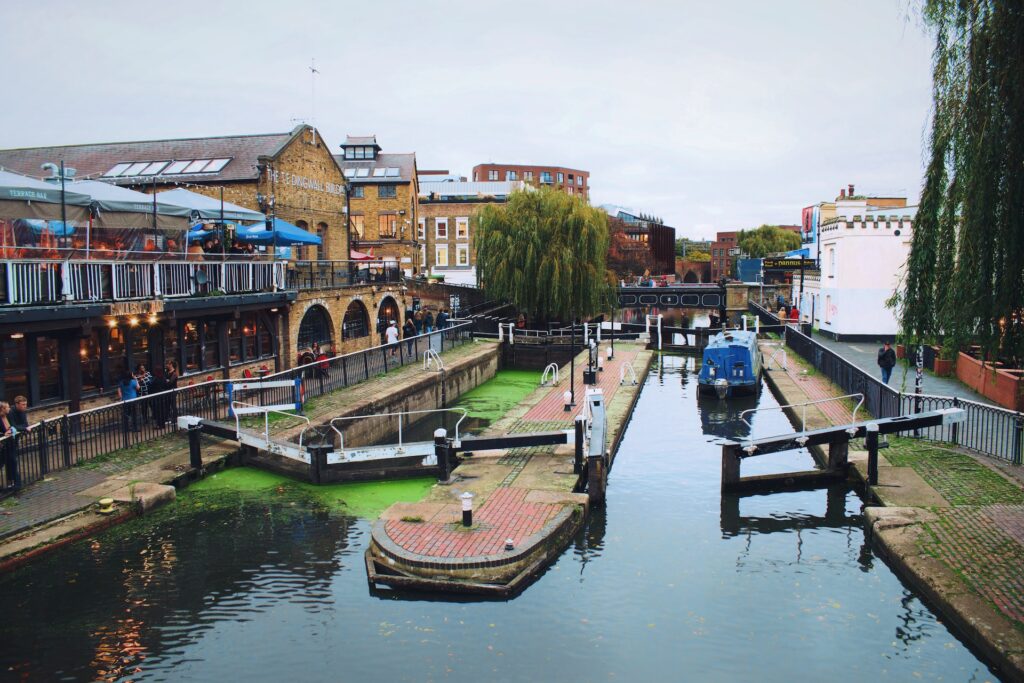
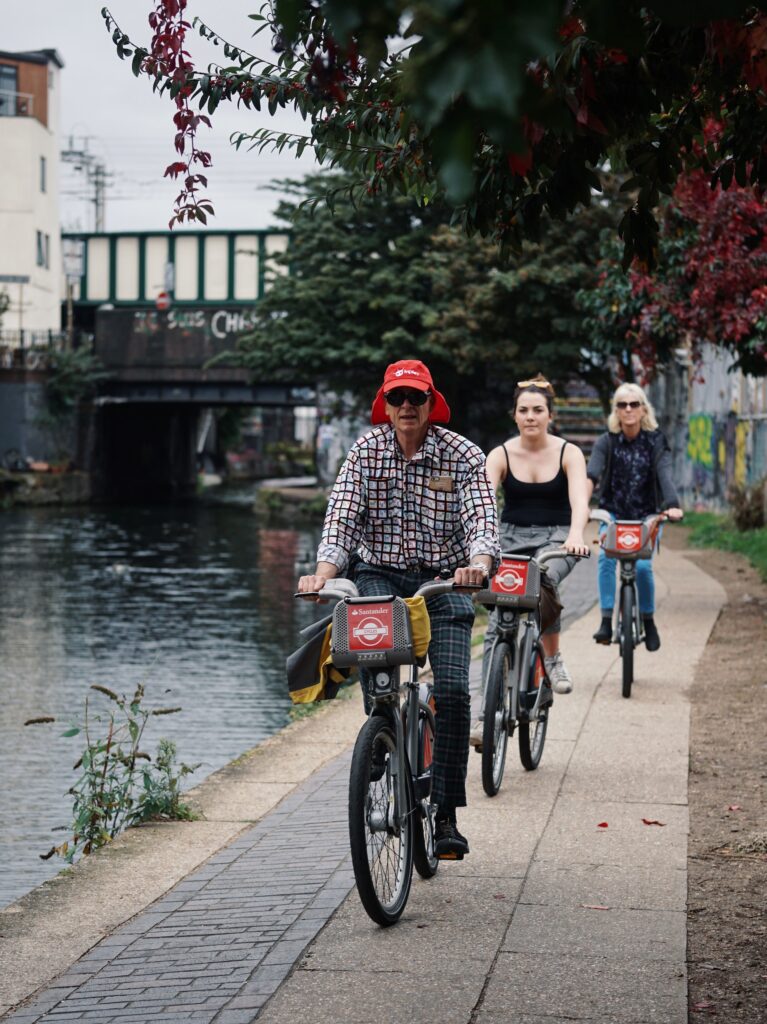
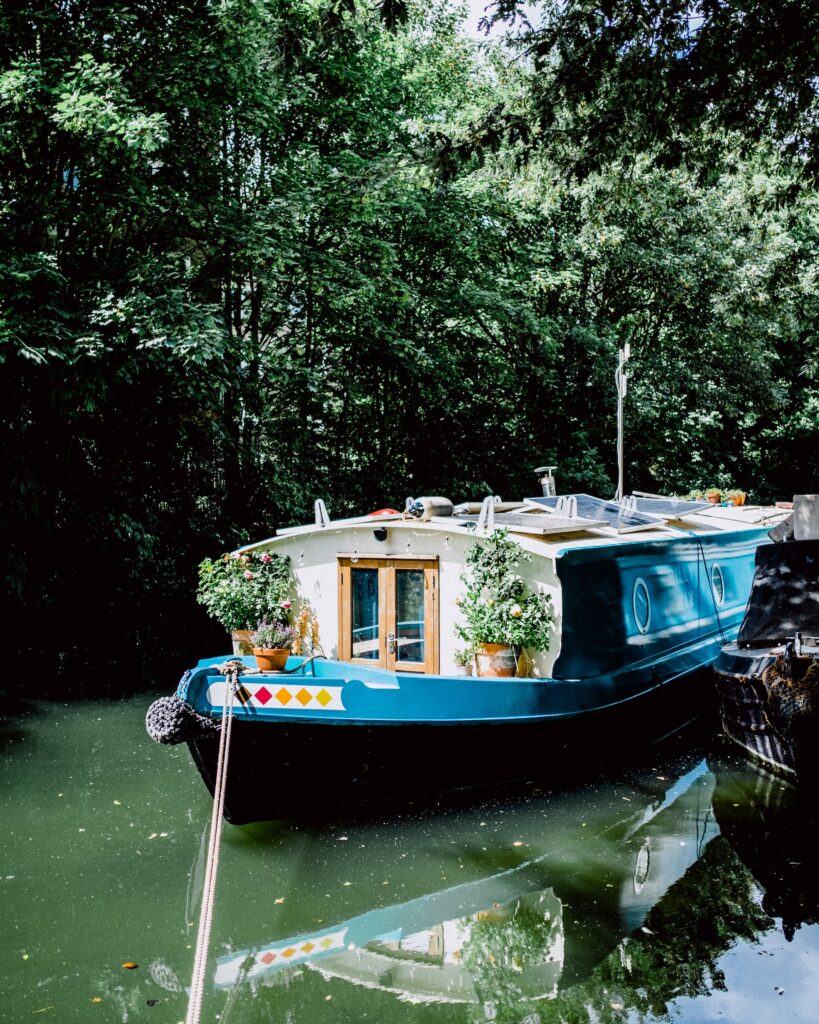
The Plentiful Parks
Yes it’s true that many Londoners aren’t blessed with gardens. Or, if they are, the garden is probably overgrown or inaccessible, or has become a den for foxes due to the lack of care and attention from landlords.
However, London is blessed with some incredible green spaces that have become shared back gardens; a playground for picnickers, dog-walkers, sun-worshippers and the rest. There’s even a handful of parks you’re allowed to legally grill in, including Burgess Park in Southwark (complete with views of The Shard), and Camden’s Cantelowes Gardens.
In 2019, London was named the world’s first National Park City, and it’s easy to see why; the capital boasts nearly as many trees as it does residents, at 8.3 million and 8.6 million respectively.
We’ll break it down further; an incredible 47% of London is green space, and another 2.5% is blue (lakes, rivers, canals…). But most importantly for London residents feeling stifled by the size and relentlessness of the place, the city has an incredible 3’000 parks. See you on the grass for a can?
Pubs Spilling Into The Streets After Work
The sight of people from pubs spilling into the streets after work is a common occurrence in London and adds to the city’s lively, inclusive atmosphere. There’s a sense of camaraderie and community that comes with meeting friends and colleagues for a drink, creating a vibrant after-work culture that segues effortlessly into a night of carousing.
Heading to the bar? I’ll have anything but a Camden Hells, please…
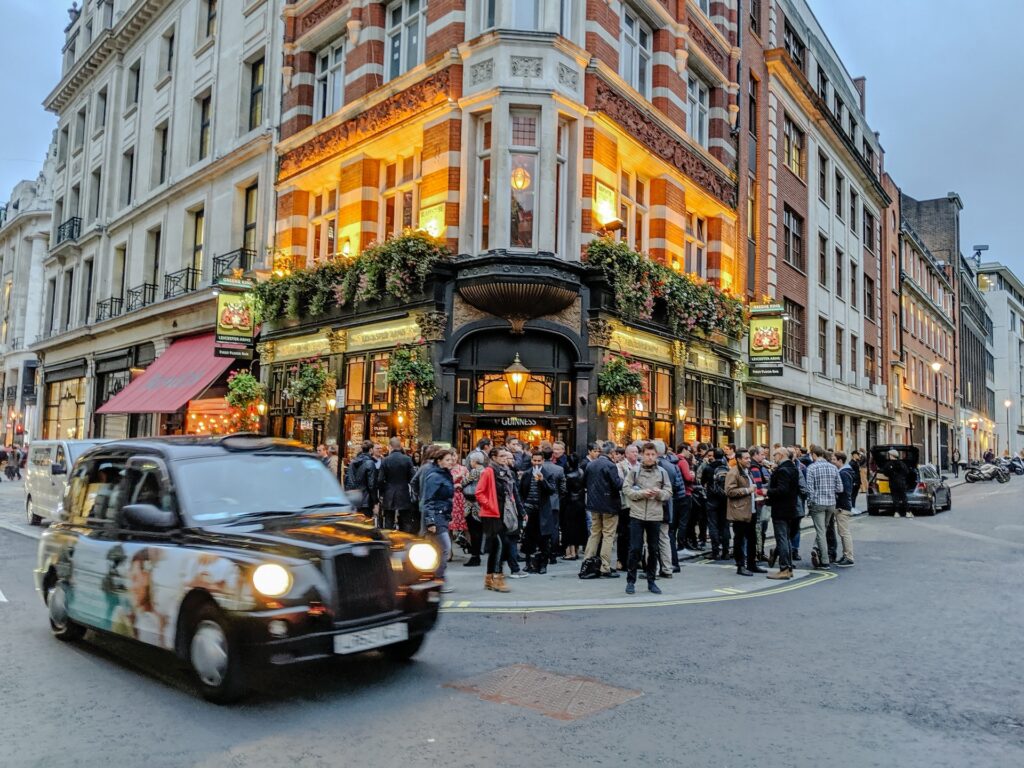
The Music Scene
London’s music scene is one of the best in the world. It’s a melting pot of genres, birthing ground-breaking movements like punk, grime, and the British Invasion, spearheaded by legendary bands like The Beatles and The Rolling Stones.
London has been home to iconic music venues like the 100 Club, Brixton Academy, and the Royal Albert Hall, hosting up-and-coming artists and international stars alike.
The city’s music festivals, such as the Notting Hill Carnival, All Points East and Wireless, attract a global audience, showcasing its influence in the music industry. London’s music education is world-class, too, with institutions like The Royal Academy of Music nurturing the next generation of music talent.
In short, the capital’s music scene is a thriving, pulsating entity that continues to revolutionise world music, making London the ultimate music capital worldwide.
At A Loose End? Go To A Market
Not sure what to do on a weekend in London? The answer is always head to a market. Indeed, the capital is home to a plethora of brilliant markets, each with its own charm and ideal for mooching around when you’re at a loose end.
The bustling ambience, the amicability of the traders, and the general vibrancy of a busy London market makes it a great place to experience the spirit of the city. Strolling through a market, discovering new stalls, tasting fresh local produce, and soaking up the atmosphere is an enjoyable way to spend a weekend day, that’s for sure.
But perhaps our favourite thing about London markets is the food, as they offer diverse culinary delights that can’t be found elsewhere. You can enjoy food from all over the world, freshly prepared, and often at a fraction of the cost of eating at a restaurant. Here are a few of our favourites:
- Borough Market: Located in Southwark, Borough Market is one of the oldest and largest food markets, dating back to the 12th century. It’s a paradise for food lovers offering fresh and organic food from all over the country (and world).
- Portobello Road Market: Situated in the vibrant Notting Hill area, this iconic market is famous for its antique stalls, fashion and street food.
- Camden Market: One of London’s most popular markets, it is known for its eclectic mix of stalls selling vintage clothing, handcrafted items and global cuisine.
- Spitalfields Market: Located in the heart of East London, this market brings with it a diverse range of fashion, antiques and food.
- Covent Garden Market: An upscale market in a historic setting offering speciality shops, fashion boutiques, arts and crafts, and food and drink options.
- Greenwich Market: London’s only historic market set within a UNESCO World Heritage site, here you’ll find arts and crafts, antiques and food stalls.
- Old Spitalfields Market: This covered market in East London offers a variety of stalls from designer clothes to food vendors from around the globe.
- Leadenhall Market: Located in the City of London, Leadenhall is one of the oldest in London, featuring a stunning Victorian architecture and offering high-end shops and dining.
- Columbia Road Flower Market: A street market in East London that is transformed into an explosion of scent and colour every Sunday, offering a wide array of plants and flowers.
- Brick Lane Market: Famous for its artsy vibe, Brick Lane Market sells all sorts of items from vintage clothing and furniture to street food from different cuisines.
Speaking of Brick Lane…
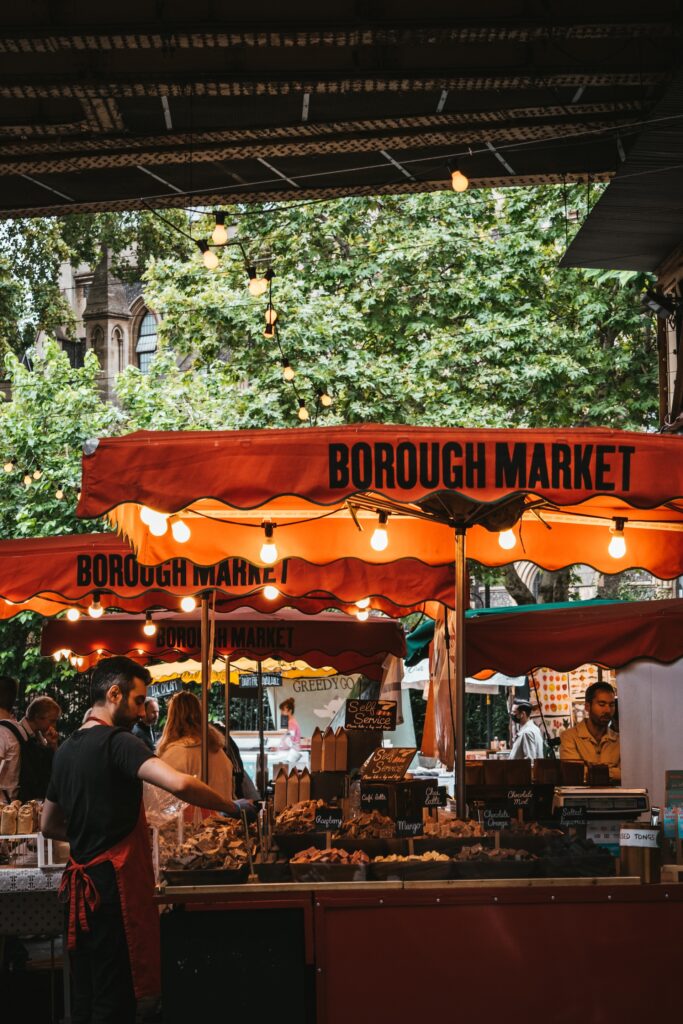

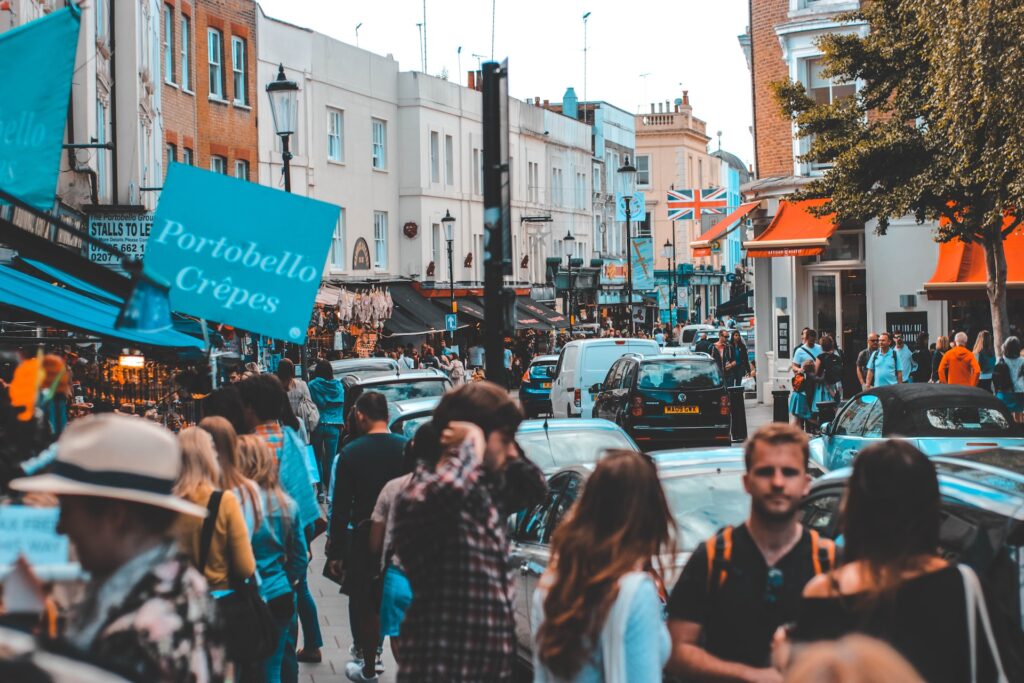
The Curry Houses & Bagel Shops Of Brick Lane
Brick Lane, in London’s East End, is one of the best streets in London. It’s known for its abundance of colourful street art and eclectic vintage stores, but above that, it’s famous for its curry houses that line the streets.
We’re particularly fond of Aladin on Brick Lane, a restaurant that claims to serve ‘London’s hottest curry’. The curry in question is their phaal and, more specifically, their ‘chicken tikka blast’ version of that already scorching dish.
However, it’s the late night bagels, a cornerstone of London’s afterhours eating, that keeps us coming back. Chewy, highly calorific and filling, a lone, late night bagel is a very satisfying meal.
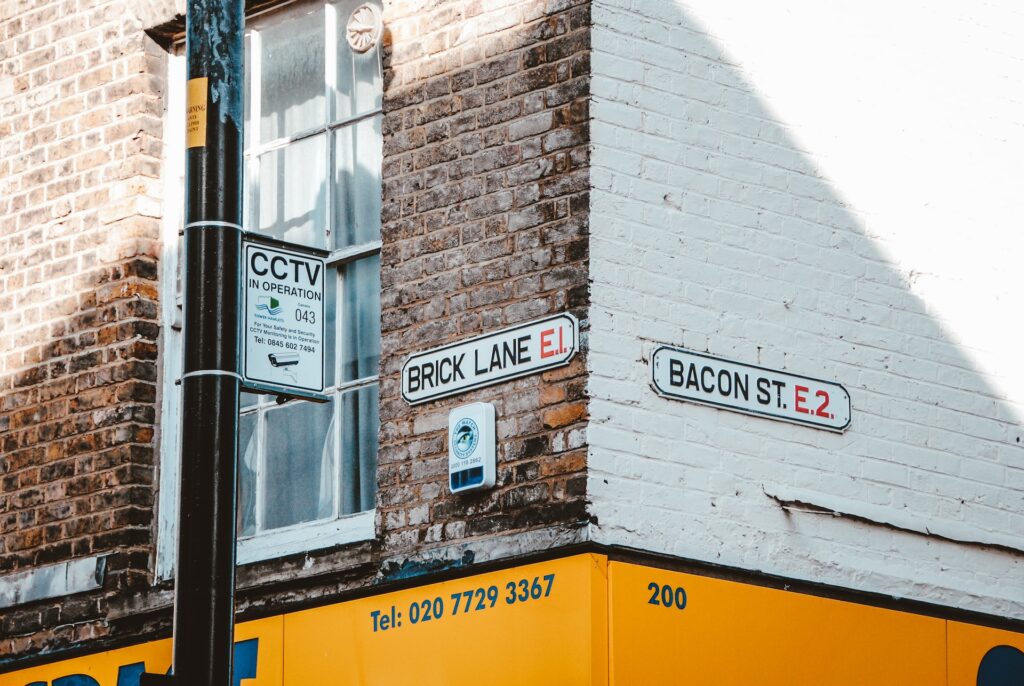
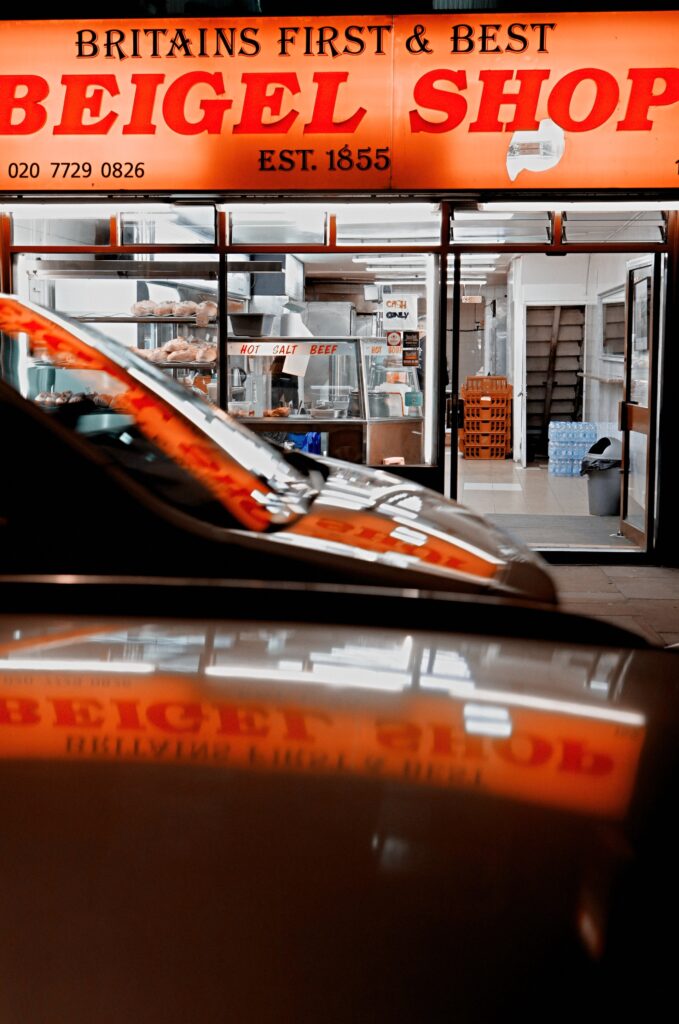

Late Night Food In Chinatown
Whilst we’re on the subject of late night eats, and although London doesn’t have the same late night food culture as cities like New York or Bangkok, you will find late night revellers enjoying a feast in the West End’s Chinatown late into the night.
Whether you’re looking for classic Cantonese from Oldtown 97 (open until 4am), are in need a dumpling fix at Dumplings’ Legend (open until 3am on weekends), or are after a bowl of Mama Noodles from the Thai/Chinese Speedboat Bar (open until 1am on weekend), Chinatown will always provide a late night feed.

The Restaurant Scene
For food lovers, London is still the best place to live in the UK, and, arguably, the world. One of the greatest joys of living in London is that you can find just about any cuisine, and eating out in this city is one of the biggest perks of living here. The diversity of deliciousness on offer, quite simply, makes the rat race worth it. Sometimes…
There Are So Many Free Things To Do
We already mentioned that London is one of the most expensive cities in the world to live in. However, a lot of it is, remarkably, free.
Many museums, art galleries and many loosely educational attractions won’t cost you a penny to enter – amazing and largely unique for a capital city. Here are a handful of them:
- The British Museum: This world-famous museum houses works from over two million years of history. It’s located in the Bloomsbury area and is open daily.
- National Gallery: Located in Trafalgar Square, the National Gallery is home to over 2,000 paintings dating from the mid-13th century to the 1900s.
- Tate Modern: This popular modern art museum is located on the former Bankside Power Station, on the south bank of the Thames.
- Natural History Museum: Here you’ll find a vast range of specimens in the areas of botany, entomology, mineralogy, paleontology, and zoology.
- Victoria and Albert Museum: Known as the world’s leading museum of art and design, it covers 5,000 years’ worth of artefacts from around the globe.
- Science Museum: Visit this museum in South Kensington to see exhibits on the history of science, technology and medicine.
- Museum of London: Discover the city’s history from prehistoric to modern times.
- National Maritime Museum: Located in Greenwich, it’s the leading maritime museum of the UK.
- Imperial War Museum: A museum dedicated to everyone who lived, fought and died in conflicts involving Britain and the Commonwealth since the First World War.
- The Wallace Collection: Here you’ll find a rich array of fine and decorative arts from the 15th to the 19th centuries.
- Whitechapel Gallery: This public art gallery on the north side of Whitechapel High Street focusses on contemporary and modern art.
- Sir John Soane’s Museum: This museum displays the eclectic collection of the architect Sir John Soane, including antiquities, furniture, sculptures, architectural models and drawings, and paintings such as Hogarth’s A Rake’s Progress.
London In The Summer
There’s nothing quite like London in the summer sunshine. In fact, we’d go as far as to say that it’s the best city in the world come the season.
For a start, in those lazy, hazy days of June, July and August, the city looks magnificent – like it’s been touched by the gods. The warmth and buzz in the air is electric. Crowds line the streets of Soho in the evenings, spilling out onto the pavements. The city’s rooftop bars buzz from early evening until close, and the parks come alive with festivals and open air cinemas. It’s glorious.
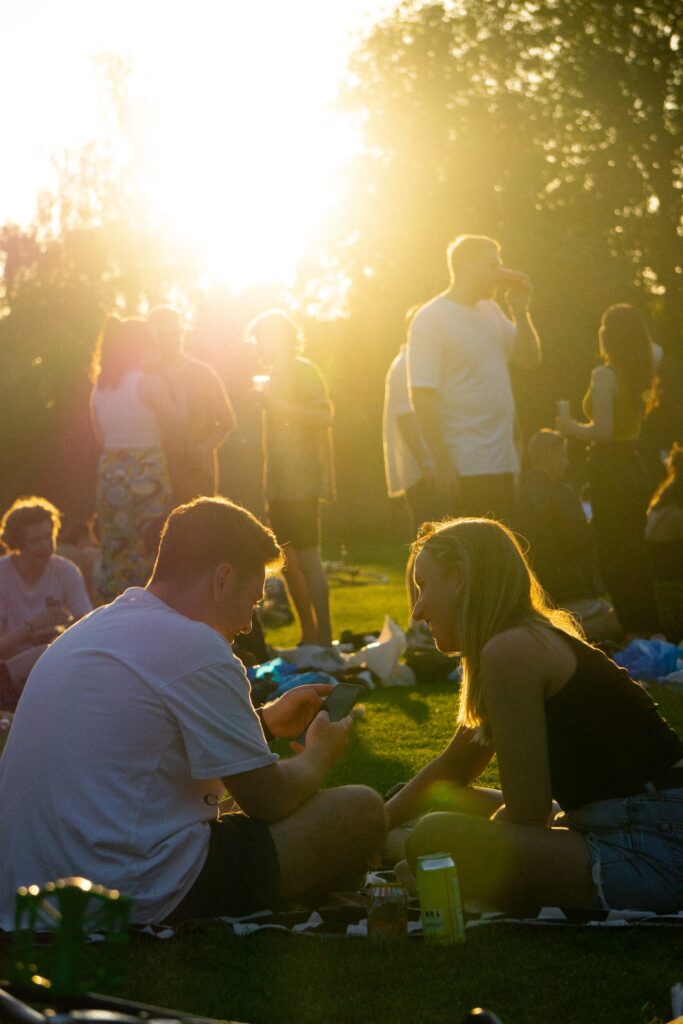
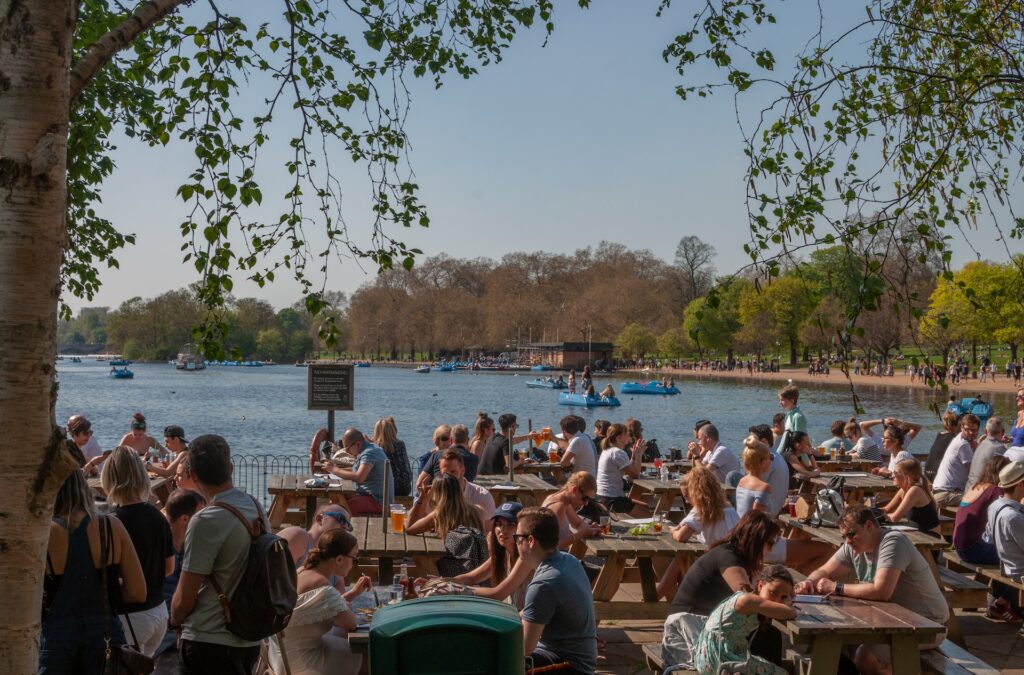
The Thames Path
The Thames is one of London’s most famous sites and home to many of the city’s hidden treasures. One of the best ways to appreciate this iconic landmark is to hire a bike and cycle the 40-mile city stretch of the Thames Path. This picturesque route has many quieter spots to be discovered, with highlights including public beaches, the charming village of Rotherhithe, and The Prospect of Whitby, which was one of Charles Dickens’ favourite pubs.
Notting Hill Carnival
London is one of the most diverse cities in the world, attracting people from all corners of the globe. As such, London’s calendar is filled with cultural festivals and celebrations that reflect its population. Come summer, the most famous of all is, of course, Notting Hill Carnival. We can already smell the delicious aromas of jerk chicken, fried plantains and goat curry wafting through the air. It’s a damn good weekend to be alive.
Street Food Markets & Halls
Markets? Again?
Well, we’re talking about a different type of market this time; London’s street food markets and halls, which seem to epitomise the recent reimagining of British food culture as a thrusting, forward thiinking scene.
These places seem to foster a dynamic, sociable atmosphere, ideal for both casual lunches and lively evening feasts. Here’s a handful of our favourites…
- Arcade Food Hall, close to Tottenham Court Road Station. Housed in the Centre Point building on New Oxford Street, and just a few second’s stroll from Tottenham Court Road station, Arcade Food Hall offers a veritable feast of global cuisines, with nine restaurant concepts currently operating here, and a fully-fledged Southern Thai joint on the mezzanine above the communal dining area.
- The raucous weekend atmosphere of Shoreditch’s Boxpark isn’t to be missed; a host of stacked shipping containers slinging street eats and craft beer to the hungry, thirsty throngs.
- Eataly in London is an expansive, vibrant Italian marketplace. It features several eateries, a bakery, a cooking school, and an array of grocery items that bring a taste of Italy to London. It’s a wonderful immersive experience for food enthusiasts and an excellent place for an aperitivo, to boot.
- Seven Dials Market, located in London’s Covent Garden, is an indoor food market housed in a transformed Victorian warehouse boasting an array of unique, independent food stalls. The market seamlessly combines a bustling street food scene with artisan coffee shops and craft cocktail bars. It’s great.
- Market Hall Victoria is nestled in the former Pacha Club building. It houses 11 exceptional kitchens, and has three bars with food spanning the globe. Its chic interior with a stunning glass ceiling and a mix of communal and individual seating, adds to its modern, urban ambience.
- Bang Bang Oriental is London’s largest Asian food hall, offering a diverse range of cuisines from across Asia. Located in Colindale, it features over 30 food stalls, ranging from Japanese sushi to Chinese dim sum. Result.
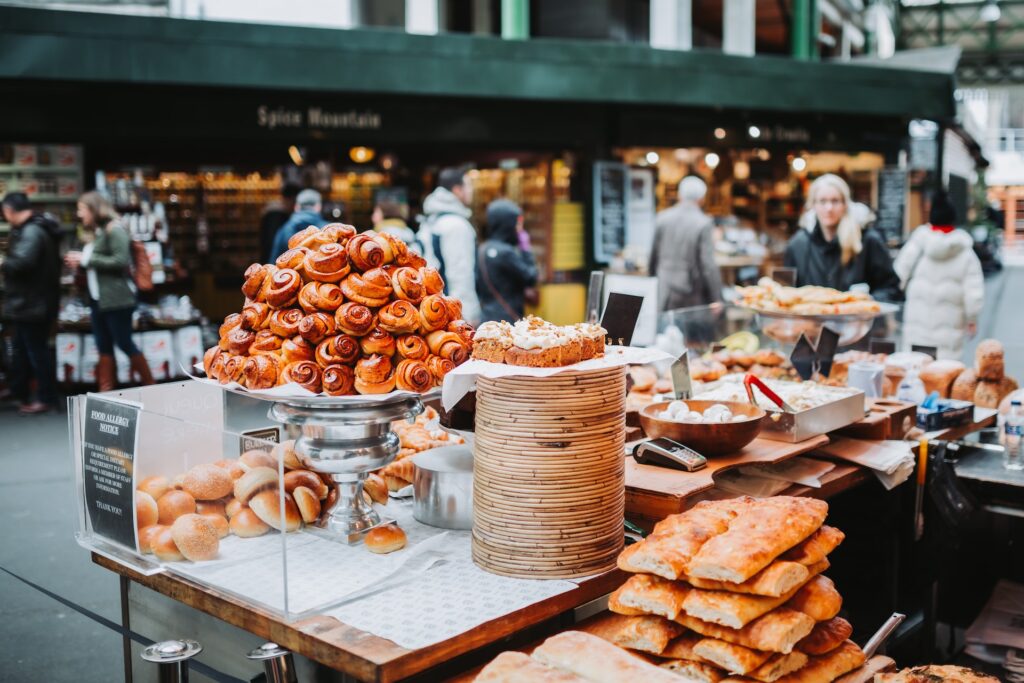
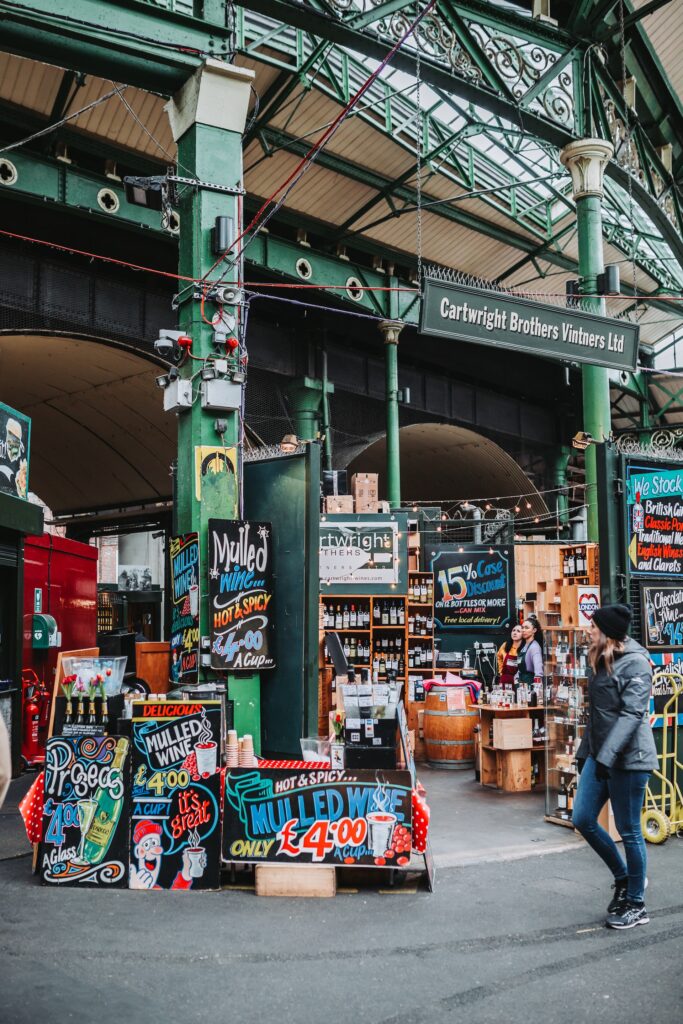
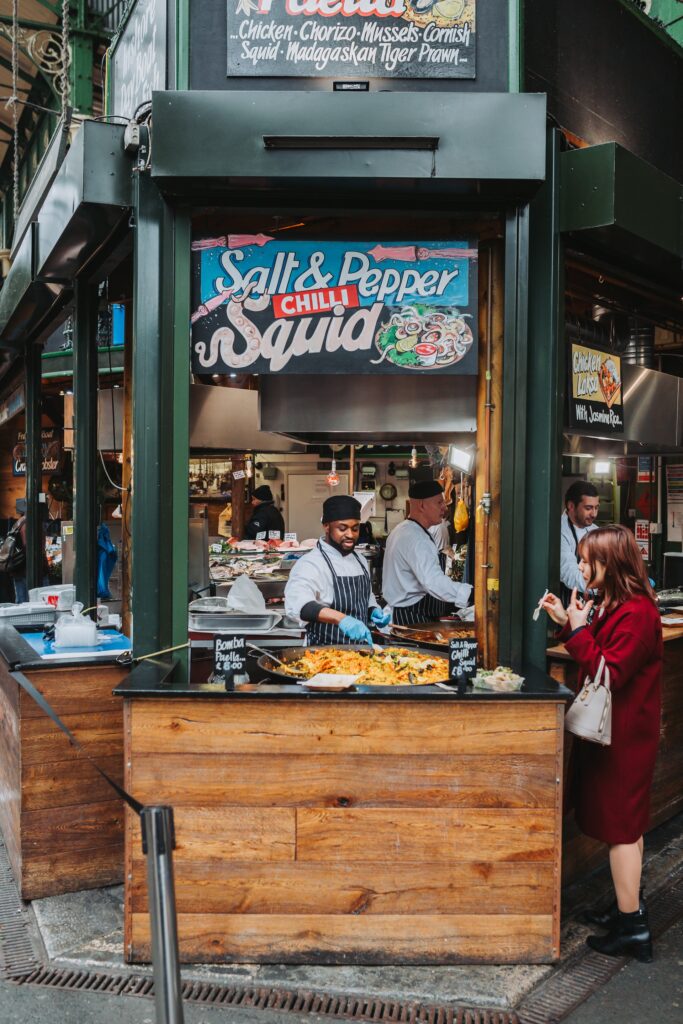
It’s Chriiiiiistmaaaaaas
If you’re a fan of twinkling lights, festive cheer, and the occasional mistletoe-induced awkwardness, then London at Christmas is your dream come true.
Christmas in the city is a magical spectacle – a time when the city transforms into a vibrant winter wonderland and decorative trees stand tall. The air is filled with the melody of carol singers and the scent of mulled wine, and things just feel different.
750,000 bulbs create a breathtaking annual spectacle along Oxford Street, offering some of the most spectacular Christmas lights in London. Wandering down the street and admiring the seasonal window displays at Harrods, Liberty, Fortnum and Mason and Selfridges will always get you in the festive mood (or, in despair at the inequality of the UK, to be honest).
Then there’s the Christmas market along the Southbank and the ice skating at Somerset House – because nothing screams ‘festive fun’ like clutching onto the side railings for dear life!
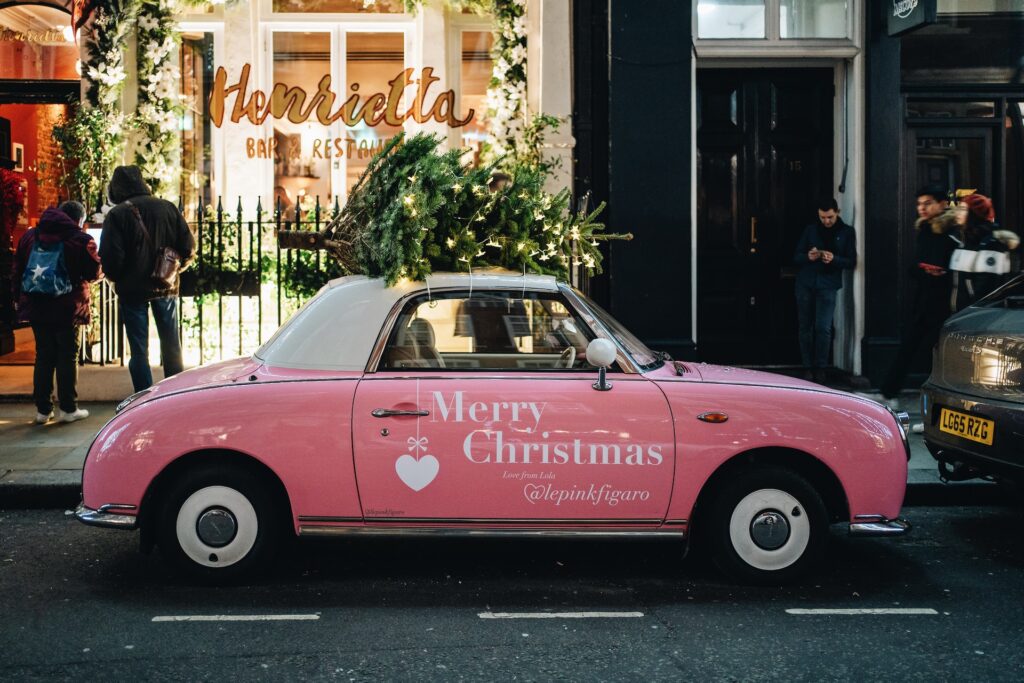
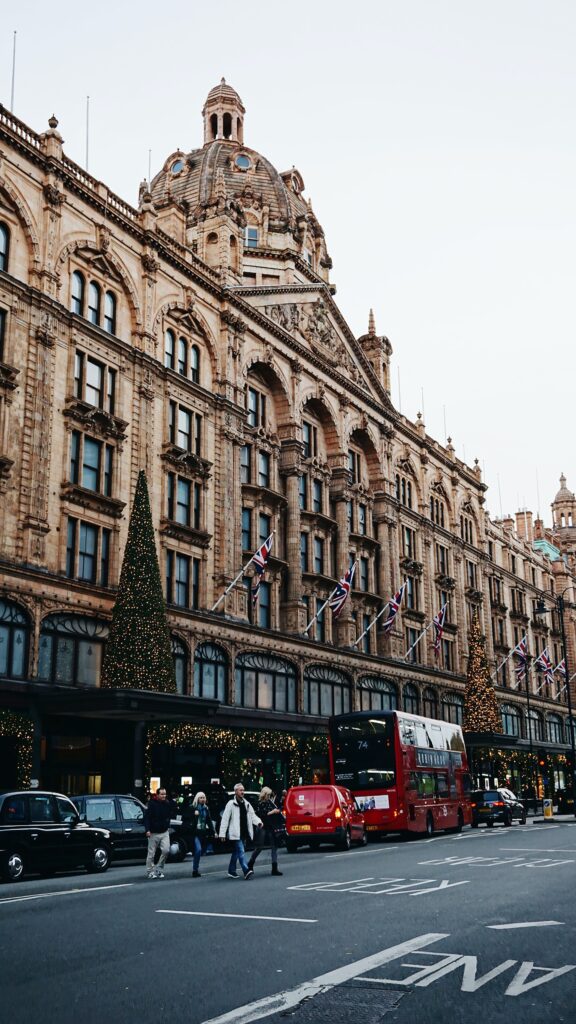

Iconic Buildings & London Institutions on Your Doorstep
Living in London, a city steeped in history and culture, is an experience like no other. With its iconic landmarks and vibrant entertainment scene right at your doorstep, it’s a city that never ceases to amaze.
Imagine waking up, knowing that if you wish in a matter of an hour, you could go and admire the city’s architectural marvels such as Big Ben, Tower Bridge, St Paul’s Cathedral, and even The Barbican.
With London institutions like the The Roundhouse in Camden Town, Ronnie Scott’s in Soho, and Brixton Electric, a renowned live music venue that has hosted some of the biggest names in the music industry, you feel like you’re connected to the cultural moments of the country.
And let’s not forget that you can have a drink and pubs like the Anchor Bankside, which was established in 1615 and was frequented by the likes of William Shakespeare.
For a Londoner, these places are not just tourist attractions, but a part of everyday life.
You Don’t Have To Drive
For many, London is city where your car is about as useful as a chocolate teapot. Why bother with the hassle of navigating through the labyrinth of narrow streets when you can hop on the tube or bus and get whisked away to your destination?
Indeed, London’s extensive public transport network, including the famous red double-decker buses and the underground tube system, allows Londoners to navigate the city with ease. Moreover, you can enjoy a pint at the pub without worrying about the drive home.

Wimbledon & Other Sports
Wimbledon is the sporting event of the summer for many. You can convene with picnics and Pimms and watch matches on the big screen across the city and, of course, take a perch on the famous Wimbledon Hill. With 17 professional football clubs and Twickenham, and even the Olympic stadium, London is simply great for sports.
And with that, we’re off for a kick-a-bout in one of those lovely parks we mentioned!
The Bottom Line
This is by no means and exhaustive list of the reasons why Londoner’s love London. In fact, we could name at least eighteen more.





